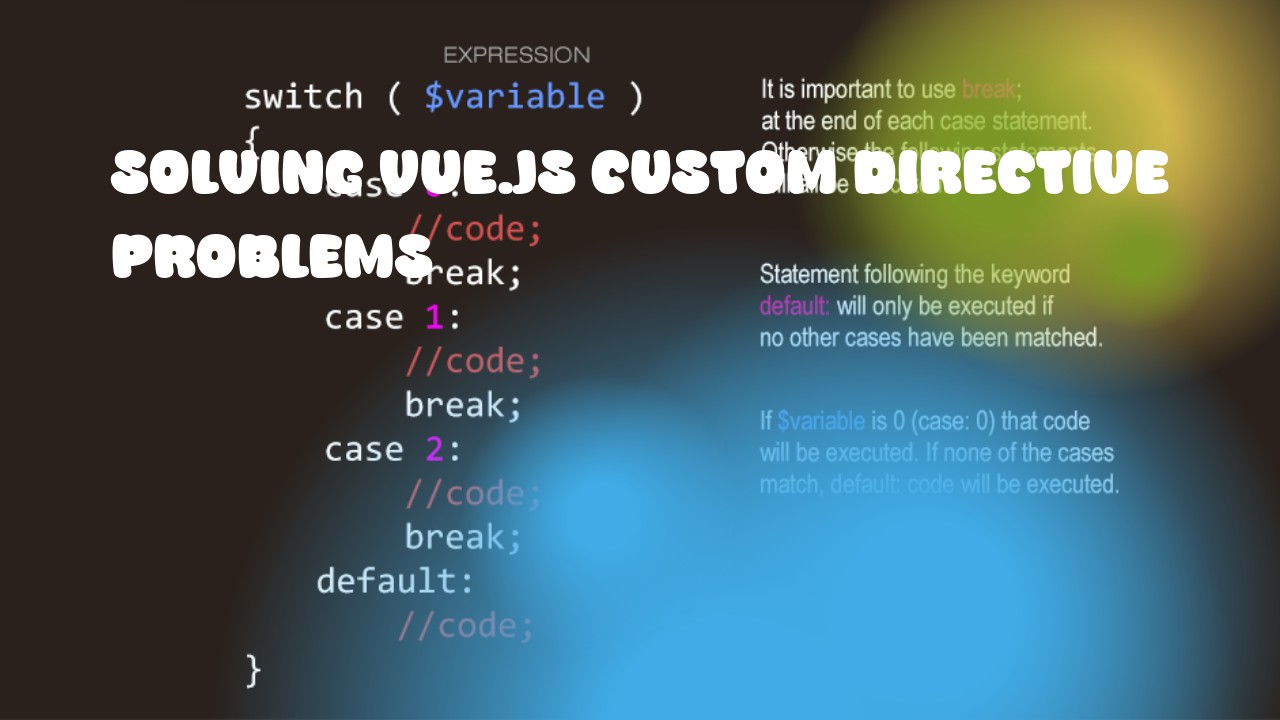When you encounter problems while creating custom directives in Vue.js, it's essential to follow best practices and debug your code. Here are some common issues you might run into:
-
Vue.js version compatibility: Ensure that the Vue.js version used with your custom directive matches your project requirements. You can check your installed version by using
vue -vin your terminal or command prompt. -
Invalid syntax: Make sure you're using the correct syntax for defining and using custom directives. The basic structure is as follows:
Vue.directive('my-custom-directive', {
bind(el, binding, vnode) { // Called only once when the directive is first bound to an element.
// Your code goes here
},
inserted(el, binding, vnode) { // Called after the element has been inserted into its parent.
// Your code goes here
},
update(el, binding, vnode, oldVnode) { // Called whenever the bound data changes.
// Your code goes here
},
componentUpdated(el, binding, vnode, oldVnode) { // Similar to update but also called after the component has updated.
// Your code goes here
},
unbind(el, binding, vnode) { // Called only once when the directive is unbound from an element.
// Your code goes here
}
})
Vue.createApp({
directives: {
'my-custom-directive': function (el, binding, vnode) {
// The above structure can be written as a single arrow function like so:
console.log(binding);
}
}
}).mount('#app');
-
Nested components: Be aware that custom directives may not work properly when used with nested Vue components. In such cases, use scoped slots or
refsto access the child component and apply your logic there. -
Lifecycle hooks: Ensure you understand which lifecycle hooks are called when using a custom directive. If something isn't working as expected, review the relevant lifecycle hook for that directive.
-
Avoid side effects: Custom directives should not modify the DOM outside of Vue's control. Any changes made by custom directives may cause unexpected behavior in your app, especially if they are not idempotent (i.e., running them twice with the same input produces the same output).
-
Debugging: When you encounter issues with a custom directive, use browser developer tools to debug and inspect your code. This will help you identify what's going wrong and where.
Remember that Vue provides a variety of built-in directives for common tasks such as handling form input, conditionally rendering content based on props, and so on. However, if you find yourself needing custom behavior in your app, custom directives can be an excellent way to achieve it.

